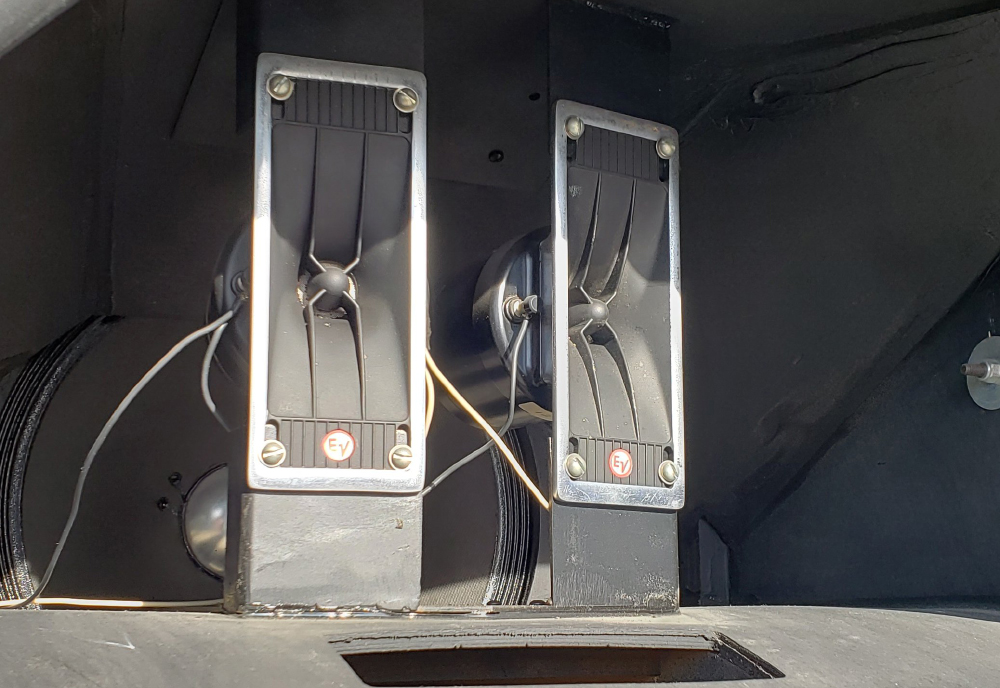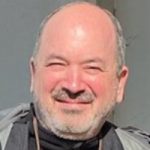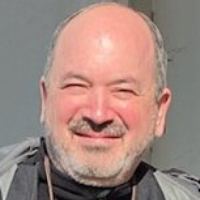Harry McCune, Jr. was bleeding money. It was 1971 and he was spending far too much time and cash on re-coning blown drivers in his loudspeakers. He was packing and stacking too many Altec boxes to get it loud enough for the big audiences attending shows by Burt Bacharach, Herb Alpert & the Tijuana Brass and The Mamas & the Papas, and expensive drivers would often fail before the end of the concert, harming his reputation for reliability. On top of all that, Alpert was always pushing McCune for better-sounding loudspeakers.
Desperate for a solution, Harry appealed to the largest U.S. manufacturers to create a robust loudspeaker, but they weren’t interested. Which is why he was now talking to John Meyer (later the founder of Meyer Sound) at the McCune Sound Service warehouse in San Francisco.
He’d heard about Meyer’s Glyph system installed at Pepperland in San Rafael, CA. The Glyph was a bi-amped, three-way quadraphonic system made from 12 large, round, purely exponential horns painted white, and it sounded great. The Glyph operated from 1969 through 1970 and amplified famous performers such as Elvin Bishop, Frank Zappa, Steve Miller and Janis Joplin. Meyer had already worked alongside the McCune crew at Monterey Pop Festival in 1967 when he was tending to Miller’s stage equipment.
Holding up a blown Altec 604 coaxial driver, the 41-year-old McCune focused his electric blue eyes on Meyer and proposed the impossible: Create a three-way loudspeaker in a single enclosure, compact enough to fit into a commercial jet cargo hold, sounding just as brilliant as the Altec 604 but 10 times louder. Meyer agreed to the challenge.
Sketching It Out
He was joining a veteran firm. McCune Sound Service had been growing for four decades and was one of the top three concert audio providers in the U.S., supplying gear and crew for the Monterey Pop Festival and hundreds of regional events as well as operating touring sound systems for pop singers and rock bands. Harry McCune, Jr., the founder’s son, had been pioneering the idea that rock and pop artists would travel with their own sound systems for consistency.

The biggest problem was consistency. Chief engineer Bob Cavin supervised the new project. He’d designed the stereo 16-channel mixer used at Monterey Pop and had made many modifications to the Altec equipment in McCune’s inventory to foster better performance.
Sketching out the proposed box, Meyer knew that all three bandpasses had to be horn loaded for better efficiency. He selected a pair of 15-inch Altec 421A woofers for the lows, a single Altec 290 phenolic 100-watt driver for the mids, heavily modified, and a pair of Electro-Voice T350 Ultra-Sonax tweeters for the highs, mounted near each other and standing in a vertical orientation but slightly angled outward left and right. The central mid-range exponential horn was designed by Meyer; its compression driver flanked above and below by the woofers in the same vertical plane so that the mids and lows would be aligned in time.

The rectangular enclosure fit McCune’s requested size: 45 x 26 x 32 inches (H x W x D), built around the horn with sturdy Baltic birch ply and additional wood bracing and framing for strength. McCune carpenter John Burke solved the enclosure-related challenges, getting as much performance as possible from the 3D volume.
Burke deserves a hefty portion of design credit for his ingenuity. For larger production runs, the wood was cut to spec by San Francisco-based Hard Truckers, while a fiberglass subcontractor molded the mid-range horns. This was before computer-controlled robot cutting arms, so nearly every piece was off by a hair, and the parts required finessing to fit. Burke led the final assembly at McCune’s shop.
Named for John Meyer’s initials and the number of bandpasses, the first JM-3 enclosure weighed in at 245 pounds. It was a passive box, powered externally with three amplifiers through a four-conductor cable terminated with Hubbell twist-lock connectors to handle higher power.
Cavin designed a stereo amplifier package using three Crown amps: a DC-300 for lows, a DC-150 for mids, and a DC-60 for highs. So that four JM-3 loudspeakers could be connected, two per channel, he modified the amplifiers to allow lower-impedance operation.

Meyer’s input limiter circuit from the Glyph, a diode-sensitive resistor grounding the feedback of an op amp to detect distortion at the amplifier outputs, was adapted for the JM-3; one limiter per bandpass. Cavin created a novel zero-phase crossover, upstream of the amps, because Meyer despised the common practice of flipping polarity of adjacent bandpasses to compensate for the phase shift inherent in second-order crossovers – a practice which smeared the critical time relationship.
To achieve the desired output pattern, the EV tweeter horn assemblies had to be mounted about 15 inches forward of the other drivers, creating a new timing issue. In 1972 there was no practical way to delay a loudspeaker component by one millisecond or more. The JM-3’s HF timing flaw was considered acceptable until 1977 when it was corrected in the electronics.
Meyer and Cavin collaborated to set the equalizer filters. To keep users from fiddling with the essential system controls, which was a common problem in all other sound systems, Meyer made certain all the electronics were protected behind sheet metal in a wood-framed box, initially fitted only with XLR inputs and speaker output jacks on the front, and nothing but a fan vent in the back. An orange neon bulb inside the translucent plastic mains connector indicated power was live. (Later, he relented to pressure from the field and allowed two gain pots and a power switch.)
Meyer completed the box tuning in early 1972, with crossover points around 400 and 4,000 Hz. Frequency response extended initially from 70 to 14,000 Hz (±3 dB), with an output pattern of 60 degrees horizontal by 40 degrees vertical. To demonstrate the new loudspeaker, Meyer collared McCune sound engineer Abe Jacob, fired up a Nagra tape machine and played for him Ringo Starr’s drum solo on the Abbey Road song “The End.”
Jacob was immediately impressed with the clarity and chesty power, noting the crisp transients of the JM-3. He resolved to take the new box on his gigs. Meyer later recalled about Jacob, “There wasn’t a lot of discussion… you didn’t have to talk him into it.”

The Big Reveal
McCune took a set of four prototype JM-3s to A&M Studios (the old Charlie Chaplin Studios in Hollywood) so that Herb Alpert and a few other A&M notables could hear how great the new boxes sounded. McCune’s son Allan was there; he remembers the crossover processing was still adjustable, not sealed off as it would be for the main production run. Alpert was floored by the sound quality and insisted upon purchasing the system to mount permanently in the studios. McCune couldn’t say no.
Without fanfare, the new boxes began to appear on gigs for McCune’s best clients and for the bands who were the hardest on gear. Finished in matte gloss natural wood, the first four JM-3s were fitted with metal grilles screwed on the front because the internals were still a trade secret.
The actual first gig in 1972 is uncertain; it depends on who is telling the story. Jacob said it was a Joan Baez performance followed by Barbara Streisand at the L.A. Forum in April, while Meyer said it was Creedence Clearwater Revival’s last tour which also started in April.
Hal Soogian remembers an earlier gig in March, with the JM-3s arriving for a benefit concert at the San Francisco Jewish Community Center. The pickup band was headed by Dino Valenti of Quicksilver Messenger Service. The JM-3s were still in their infancy, a fact signaled by the presence of engineers Meyer and Cavin helping veteran sound engineer Mort Feld.
Soogian was amazed at the “ferocious” sound coming out of these compact boxes. When nobody was looking, he tried to pry off the grille to peer inside. (Years later, he succeeded in getting hired by McCune Sound Service and rose through the ranks to become the company’s most requested sound engineer in the 1980s and ‘90s, mixing the great majority of his gigs on the JM-3. He says the sound could be powerful or pretty, whatever you wanted, but always with gorgeous highs.)
San Francisco sound engineer Lee Brenkman first saw the JM-3 at the Revival club in North Beach, amplifying a Loggins and Messina tour date in April 1972. Local country rock band Clover was the opener. Jacob remembers trucking the JM-3s down to Los Angeles in April 1972: the concert “Four for McGovern” was Streisand’s attempt to help presidential candidate George McGovern. The JM-3s were arrayed in the L.A. Forum to augment Showco’s stage system, brought from Texas to support client James Taylor, who was sharing the stage with Carole King, Quincy Jones and Streisand.
Creedence Clearwater Revival toured North America in 1972 with sound mixed once again by ex-McCune Sound Service staffer Bruce Burns, who was now an independent FOH mixer. In May, news reports touted the band’s powerful new all-horn-loaded speaker system. For this final tour before they broke up, CCR played through the best sound system in the world.
Changing The Paradigm
Harry McCune, Jr often told about how Bill Graham called to rent a sound system for Winterland Ballroom for a Grateful Dead concert, and since the Dead were notorious for blowing up sound gear, the “bulletproof” JM-3s were sent. After the concert, McCune called Graham to schedule the pickup, with Graham saying there was no need for it – he would be writing a check to buy the system.
McCune replied that he was sorry, but the loudspeakers weren’t for sale. Graham insisted that everything has a price, but McCune held his ground, explaining that they were very special, the hard-earned result of immense effort, and nobody could buy them. Greatly annoyed, Graham said he and Harry could remain friends but no longer would they do business together.
Grateful Dead sound engineers Owsley “Bear” Stanley and Dan Healy noted later that they were delighted with the new McCune sound system. Healy was an ex-McCune Sound Service bench tech who had learned the basics of tube electronics from Harry McCune Sr before going out on his own. Bear was just happy that McCune Sound had finally solved the problem of Healy always blowing stuff up.

Jacob ordered four JM-3s and two amp racks sent to New York to help fix the sound problems of Jesus Christ Superstar on Broadway, to replace an overwhelmed JBL Paragon home hi-fi system specified by the previous designer. He set two JM-3s over the proscenium for main coverage and flanked the stage with another pair to bring the psychoacoustic focus back to the performers.
It was the most powerful sound system heard in a Broadway musical up to that time. For this and other work saving the musical from failure, Jacob received historic credit as sound designer in Playbill. He continued to recommend the JM-3 for his Broadway clients throughout the 1970s, but some of them settled for less expensive approaches. Perhaps his best-known JM-3 design was for Beatlemania, which opened in 1977. The production used four JM-3s for mains and smaller two-way McCune SM-3 speakers at the rear for quadraphonic effects.
In 1973, King Crimson toured North America with a JM-3 system; the band’s management company was so happy with the results that they shipped a JM-3 system to Roxy Music in Europe in 1974, which is where former AIR Studios tape op Chris Michie first heard the box. Roxy was playing in old theaters with three JM-3s per side in ‘74, the six boxes driven by three amp racks. Young Michie was mentored in his mixing style by McCune system tech Mike Neal, learning to keep audience SPL comfortable but responsive on the proprietary McCune MC-2 mixer.
Michie used the inner pair of JM-3s for vocals and drums only, while the rest of the loudspeakers carried a full mono mix. In 1975, Roxy toured with eight JM-3s, enough punch even for Wembley Arena. He said the horn-loaded JM-3 was the “gold standard of ‘70s integrated sound systems,” especially compared to the mediocre systems everyone else was running such as Tycobrahe’s problematic direct-radiating three-way box with the crossover sitting out at FOH, a magnet for fiddling fingers. Michie relocated to California to work for McCune Sound Service, including some re-coning maintenance on JM-3s.
For stadium and arena gigs, 12 or more JM-3s were usually arranged left and right – starting with a cluster of three over three per side, splayed outward and upward for raked seating coverage, with more speakers added if there were wraparound audience zones. Rich Mowdy was the first person to fly the JM-3s overhead using rigging hardware, doing so at a show in Hawaii.
Following this, an official rigging method was devised by McCune: flexible rigging belts were used to basket a single JM-3, the belts wrapped around the sides and bottom of the enclosure, held in place by new metal straps that were bolted onto the cabinets. (These bare metal straps were subsequently used as side handles, though they did not fit the hand. Otherwise, the JM-3 was devoid of handles and rigging steel.)
The loudspeaker could hang straight or it could point down at an angle. Later still, a rigging bracket called “M Rig” was welded together to hold three JM-3s in the air.
After the success of the JM-3, Meyer was invited to perform acoustic research at the Institute for Advanced Musical Studies in Montreux, Switzerland. There, he researched and then patented a low-distortion compression driver technology.
Note: Part 2 of this article will focus further on JM-3 applications as well as subsequent developments like the JM-5 subwoofer. The author thanks John Meyer, Bob Cavin, Abe Jacob, Pat Maloney, Allan McCune, Dennis Minnick, Kevin Tyrrell, Matt Hock, Dan Ritzo, Chris Michie, Greg Kirkland, Terry Simmons, Lee Brenkman, Greg Oliva, Dan Bouchante, Dave Terp, Dave Johnson and Hal Soogian for their input.















